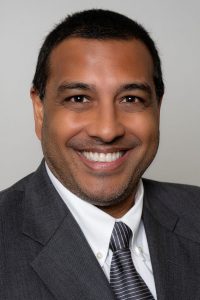(Dr. Shetal Shah, MD, FAAP is a neonatologist at Maria Fareri Children’s Hospital. He is NYS AAP Chapter 2 President. This op-ed was published on Orlando Sentinel on September 16, 2020)
With only a few weeks until Election Day, voters are feverishly hearing from candidates running for offices from your local town board to president of the United States. Though rallies, town halls and campaigning are mostly virtual this election season, candidates are articulating their visions and appealing to voters’ interests. As an electorate, we are being demographically portioned into groups such as the “suburban” voter, the “millennial” voter or the “single-issue” voter.
However, one major constituency is not being highlighted in the current debate, which is why, as a pediatrician, I plan to vote like children’s futures depend on it in November. Children are 20% of the population but 0% of the vote, and their problems don’t get addressed unless physicians, parents, teachers and those who care for kids make their issues are own.
Nothing is more fundamental to child health than health insurance and the ability to see a doctor when your child is ill. For healthy children, insurance coverage allows kids to access preventive care like autism screening, vision/hearing/dental screening and life-saving immunizations.
But while the current COVID pandemic has highlighted disparities in children’s access to internet and quality virtual education, long-standing income-based gaps in children’s health insurance coverage have gone largely unnoticed.
Medicaid is the largest insurer of children, and along with Child Health Plus, covers about 39 million kids, including children in foster care and with special healthcare needs. Deeper cuts to the millions of children covered by public insurance were only forestalled by the COVID-19 pandemic, but will be front-and-center next legislative session in every state as they grapple with budget deficits and coronavirus-related financial strain.
Nationally, we’ve seen an increase in the rate of uninsured children over the past few years. The COVID-19 pandemic, regulatory obstacles and reduced funding have led to over 425,000 children losing health coverage. This reverses almost a decade-long trend of annual reductions in the number of uninsured kids. In 2016, only 4.7% of children were uninsured, the lowest rate ever recorded.
What did that mean? It meant my patients with asthma could get inhalers and say away from the emergency room. It meant more children with diabetes had access to insulin. It meant more patients on my hospital’s oncology ward could receive chemotherapy.
I will be voting for kids because reduced Medicaid funding will harm my patients. Patients like the extremely premature babies in my intensive care unit who — born the size of an iPhone — need special ventilators to breathe, medications to keep their hearts beating and customized intravenous fluids prescribed daily and adjusted hourly. Half of all premature babies are covered by Medicaid and without a strong, well-funded program to support them, I fear they won’t get the physical, occupational and speech therapy they need to thrive.
Decades of data show children insured by Medicaid do better in school, graduate college and become healthier adults than if left uninsured and without access to a physician. This makes Medicaid a good long-term investment as well. For every dollar invested in the program, the state receives a dollar in federal funds.
Protecting Medicaid locally and across the county is essential to the health of children. That is why I plan to cast my vote with children’s needs in mind. The policies and laws and candidates we support today will impact our children. Kids can’t vote, but I can vote like their futures depend on it.

